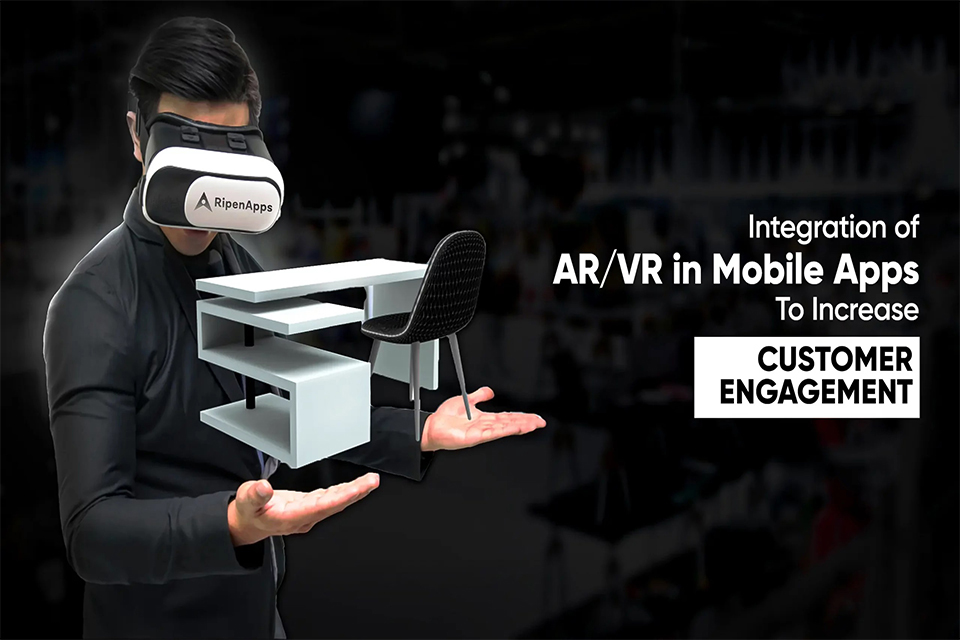Augmented Reality (AR) and Virtual Reality (VR) are at the forefront of technological innovation, reshaping industries and daily life alike. But what exactly are AR and VR, and how do they differ? This article explores these immersive technologies, highlighting their differences, applications, and emerging trends. Whether you’re a tech enthusiast, a developer, or simply curious, this comprehensive guide will provide valuable insights into AR and VR, helping you stay informed in this rapidly evolving industry.
1. What Are AR and VR Technologies?
2. How Does Augmented Reality Work?
3. What Is Virtual Reality?
4. What Is the Difference Between AR and VR?
5. What Are the Applications of AR and VR?
6. How Are AR and VR Used in Gaming?
7. What Are the Trends in AR and VR Technologies?
8. What Is Mixed Reality and How Does It Relate to AR and VR?
9. What Devices Are Commonly Used for AR and VR?
10. What Does the Future Hold for AR and VR Technologies?
AR and VR technologies enhance our perception of reality through digital means. Augmented Reality overlays digital information onto the real world, allowing users to interact with both environments simultaneously. In contrast, Virtual Reality immerses users in a fully digital environment, often requiring the use of specialized headsets. Understanding these technologies is essential as they become increasingly integrated into everyday life, from entertainment to education.
AR and VR are not just buzzwords; they represent significant advancements in how we experience and engage with the world. With applications spanning various industries, from healthcare to real estate, these technologies are reshaping how we learn, play, and communicate.
Augmented Reality works by superimposing digital content onto the real world through devices like smartphones and AR glasses. Using cameras and sensors, AR systems recognize physical objects and environments, allowing them to project relevant digital information. For example, AR applications like Pokémon GO allow users to see and interact with virtual creatures in their real surroundings.
The technology behind AR includes computer vision, simultaneous localization and mapping (SLAM), and depth tracking. These elements work together to create a seamless integration of virtual content with the real world, making experiences more interactive and engaging.

Virtual Reality transports users to a completely digital environment, isolating them from the physical world. Through the use of headsets like the Meta Quest, users can experience immersive simulations that can replicate real-world scenarios or create fantastical worlds. VR technology uses advanced graphics and sensory feedback to create a convincing experience, making users feel as though they are truly "inside" a different world.
The applications of VR extend beyond gaming; they include training simulations for fields like aviation, medicine, and military operations. VR enables users to practice skills in a safe environment, enhancing learning and retention.
The primary difference between AR and VR lies in their interaction with the real world. Augmented Reality enhances the real world by adding digital elements, while Virtual Reality creates a wholly immersive experience that replaces the real world.
Feature | Augmented Reality (AR) | Virtual Reality (VR) |
Environment | Real + Digital | Fully Digital |
Interaction | Real-world objects + Digital elements | Digital environment only |
Devices | Smartphones, AR glasses | VR headsets |
Understanding these differences is crucial for selecting the right technology for specific applications, whether it's for entertainment, training, or education.

Both AR and VR have diverse applications across various sectors:
· Gaming: AR and VR create engaging gaming experiences that immerse players in virtual worlds.
· Education: These technologies offer interactive learning experiences, making complex subjects more accessible.
· Healthcare: AR can assist in surgeries by overlaying critical information, while VR is used for training healthcare professionals.
· Real Estate: Virtual property tours allow potential buyers to explore homes without physical visits.
By leveraging AR and VR, industries can enhance user engagement and improve training outcomes.
In gaming, AR and VR technologies revolutionize the way players interact with virtual environments. AR games like Pokémon GO encourage physical activity by blending the digital and real worlds. Players hunt for virtual creatures that appear in their actual surroundings, making the game more engaging.
Conversely, VR games immerse players in entirely new worlds, allowing them to experience adventures as if they were part of the game. Titles like Beat Saber and Half-Life: Alyx showcase the potential of VR, offering experiences that traditional gaming cannot match.
The AR and VR landscape is continuously evolving, with several trends shaping the future:
1. Increased Accessibility: As technology advances, AR and VR devices are becoming more affordable and user-friendly, making them accessible to a broader audience.
2. Integration with AI: Combining AR/VR with artificial intelligence enhances interactivity and personalization, leading to more engaging experiences.
3. Social VR: Platforms are emerging that allow users to interact in virtual spaces, fostering social connections in a digital format.
These trends indicate a promising future for AR and VR, as they become integral to our daily lives.
Mixed Reality (MR) combines elements of AR and VR, allowing real and virtual objects to coexist and interact in real-time. MR enhances user experiences by enabling interactions between physical and digital worlds. This technology is particularly useful in applications like training simulations, where users can manipulate both real tools and digital information simultaneously.
For instance, a surgeon can practice a procedure using real instruments while receiving guidance from digital overlays, improving precision and skill transfer.

Several devices cater to AR and VR experiences, including:
· AR Glasses: Devices like Microsoft HoloLens project digital information onto the real world.
· VR Headsets: The Meta Quest and HTC Vive provide immersive experiences through high-quality visuals and sound.
· Smartphones: Many AR applications, such as Snapchat filters and IKEA Place, utilize smartphone cameras to deliver AR experiences.
These devices play a crucial role in how users experience AR and VR technologies, each offering unique features tailored to different applications.
Contact: Ashley Wu
Phone: +86 17773983073
E-mail: [email protected]
Add: 708 Room A Buiding Huafeng International Robot Industrial Park Xixiang Bao'an